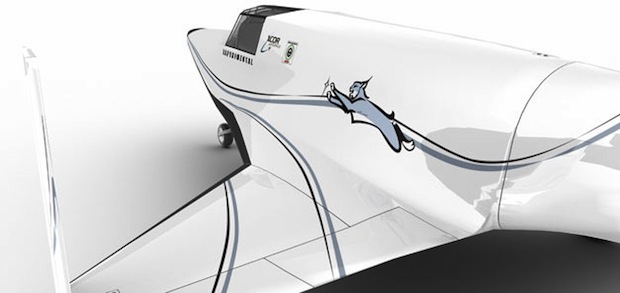The Planetary Science Institute (an august body involved in active space missions and science education around the world) has just signed a Memorandum of Understanding with Xcor Aerospace to get a human-operated observatory flown beyond the atmosphere aboard Xcor's suborbital Lynx spaceplane. As well as offering a laundry list of benefits compared to bigger orbital telescopes, including comparatively smaller costs, it's also a sign that the burgeoning commercial spaceplane business could bolster scientific research.
PSI wants to use Xcor to get its Atsa telescope system into space. Atsa is much more flexible than a space-based telescope like Hubble, albeit with dramatically smaller optics and thus scope for observing deep space objects. However, Atsa is ideal for looking at objects within the solar system, particularly those bodies that hang out near the Sun, which makes them all but impossible to observe from ground-based telescopes thanks to that pesky atmosphere getting in the way and scattering all the light.
Lynx's spacecraft can be flown from its launch site on a specific trajectory that'll put Atsa in optimal viewing position once it clears the atmosphere, enabling pinpoint observations during the several minutes the Lynx is actually in space. Because an expert human operator is aboard, there will be fewer of the sorts of delays in optimizing a typical space-telescope observation, and if a mistake is made or an observation turns up promising data that needs further investigation, it's merely a question of paying for Lynx to pop into space again. There's also the benefit from the spaceplane's short turnaround time on the ground, which could allow for multiple time-staged observations of a planetoid or asteroid flying near the Sun. And if something technical goes awry with the telescope itself, it's simply a matter of hauling it back to the lab, fixing it, and returning to space.
NASA is savvy to this sort of low-cost observation, and has been trying to bolt a giant observatory into the side of a jumbo jet, along with launching many of its own suborbital observation rocket missions. The benefit that space planes like Xcor can offer is that they allow access to ex-atmospheric domains for clearer observations, they're much cheaper than flying orbital missions aboard the Shuttle (now no longer an option), the ISS, or as a dedicated space satellite, and they allow for direct human troubleshooting. Considering that the Hubble itself is aging, and the successor James Web Space Telescope looks to be in planning and funding trouble (tragically, from a science point of view), it looks like commercial spaceflight will prove to plug a small but important capability gap.
Chat about this news with Kit Eaton on Twitter and Fast Company too.
Read More: The End Of The Shuttle Program Could Mean A Hotel On The Moon, Space Mines, And A Lot Of Pollution









